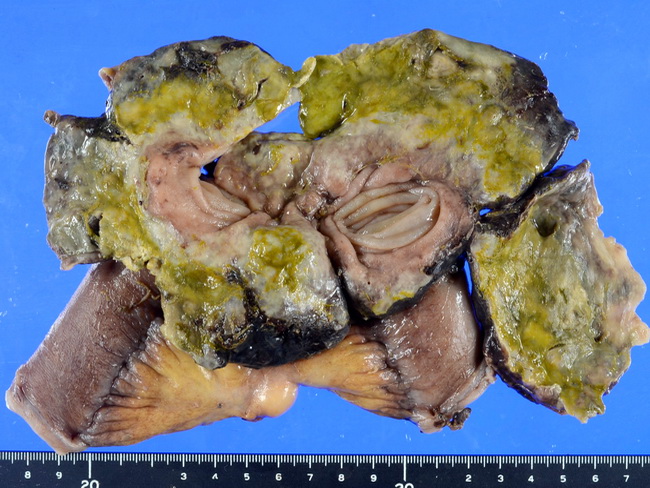EATL : Clinical & Gross


Comments:
Clinical Features: Enteropathy-associated T-cell lymphoma (EATL) occurs in 6th and 7th decades of life with a slight male predominance. As the name suggests, it is closely linked to and is a known complication of Celiac Disease. Patients can present with abdominal pain, diarrhea, anorexia, weight loss, fatigue, nausea & vomiting (due to intestinal obstruction), intestinal hemorrhage, or intestinal perforation. Abnormal lab. values include elevated LDH levels, low serum albumin, and low hemoglobin. Hemophagocytic syndrome occurs in a small proportion of patients. Gross Pathology: EATL can appear as an ulcerating nodule, plaque or a stricture. Less often, it forms a large fungating mass. The adjacent bowel mucosa is thinned with loss of mucosal folds. The most common location is small intestine, especially jejunum and ileum. Large intestine and stomach are involved less frequently. In 30% to 50% of cases, the lesions are multifocal. The tumor frequently spreads to mesentery and mesenteric lymph nodes. In rare cases, there are EATL-type lesions in lymph nodes in the absence of gross intestinal disease. Patients with refractory type 2 celiac disease might develop extra-gastrointestinal lesions involving skin, lymph nodes, spleen, or CNS. This resection specimen shows EATL that presented as an ulcerated mass in the ileum. Image courtesy of: @Patholwalker



